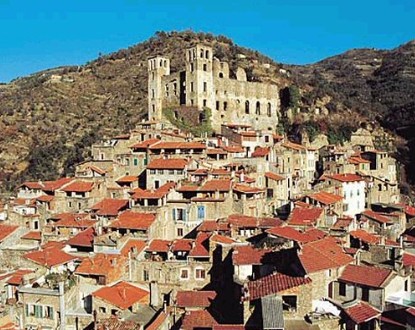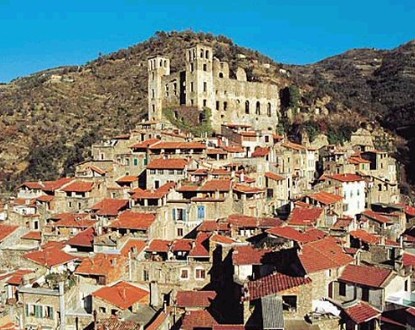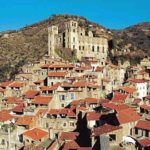This city, originally named Dulzana in Celtic, was an important fortified town as early as the 11th century. Dolceacqua is divided into two parts, separated by the small Nervia stream. The fortified side, called La Terra, is on the left bank, and the Borgo is located on the right bank. A medieval bridge, the Ponte Vecchio from the 15th century, links them together and was immortalized in 1884 by Monet.

This powerful Genoese family expanded their possessions to nearby villages: Apricale, Isolabona, and Perinaldo. In 1559, the Doria family acquired Rocchetta Nervina. In 1634, during the war between Genoa and Piedmont, after the Doria submitted to the Piedmontese, their fief became a marquisate, which is now linked to the fate of the House of Savoy. In 1746, the castle was damaged during the War of the Austrian Succession. The Doria returned three years later and settled in a palace near the church.
Napoleon and Masséna stayed here. This village, now in Italy, has several churches and chapels. We can mention in passing: the Baroque-style Oratory of Saint Philip Neri, the Church of Saint Anthony from 1471 where one can admire a Brea depicting Saint Devota, the Church of Saint George with the Doria tomb of Romanesque origin, this last one from the 11th century was expanded over the centuries, the Oratory of Saint Sebastian, and the Chapel of Saint Michael. The old citadel, which defended the salt route from Ventimiglia to the Roya Valley and then to Piedmont, has preserved traces of its former military role with the castle gate and Luca gate, which defended access to the fortified town.
Dolceacqua is also known for its renowned wine production, the Rossese, and olive growing. Having finished with the wine, which Rabelais considered the refrain of every good meal, we should note the reputation of the place among food lovers. This stronghold was also linked to the County of Nice, separated from it after 1860. Some have compared this citadel to Entrevaux; certain similarities in the role and configuration of the two ancient fortresses can indeed be recognized.
Thierry Jan



